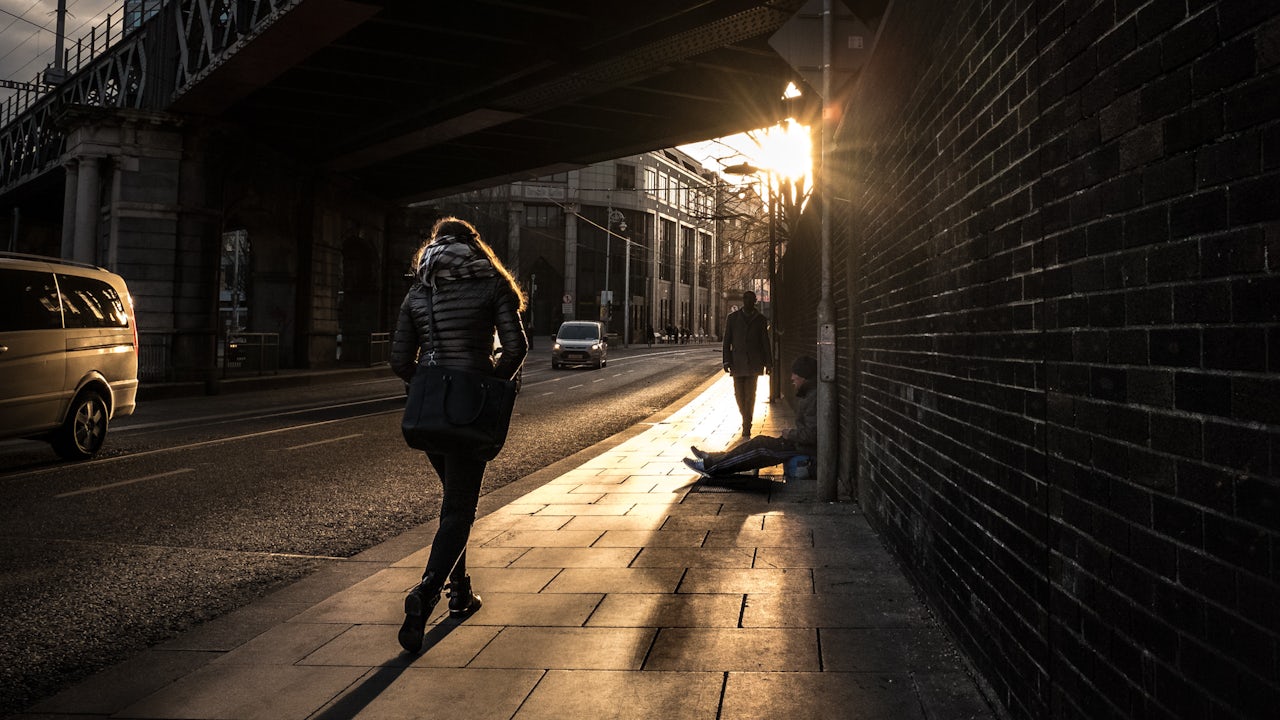Sky-high housing prices in California and New York have made the two states the epicenter of America’s homeless crisis. Combined, they account for 40.46 percent of the nation’s homeless population, according to data from the U.S. Interagency Council on Homelessness. Yet while only 5 percent of New York City’s homeless population lack access to shelter, in California’s largest city, Los Angeles, an entire 75 percent are left on the streets.
That reflects dramatically different spending priorities, says Margot Kushel, a professor of medicine at University of California San Francisco who has studied homelessness in California. Though Los Angeles has prioritized creating long-term affordable housing as a way to end homelessness, which in itself is not a panacea for people who lack the resources to perform basic tasks like buy groceries, the city has let spending on temporary shelters fall by the wayside. According to Kushel, the city has demonstrated “not a lot of sustained effort on homeless services (aka shelters etc).”
Los Angeles also spends less than other major cities on its homeless population in general. An April 2018 auditor report found that, while New York City allocates roughly $17,000 per homeless resident, Los Angeles budgets only $5,000.
“Partly, it is a matter of definition,” Kushel told me. Los Angeles has recently invested in Measure HHH, a tax hike that voters passed in November 2016 and that puts $1.2 billion toward homeless services. That money was not factored into the auditor report.
But in general, Los Angeles has been late to the game in sheltering its homeless population. Unlike New York City, D.C., and Massachusetts, L.A. does not guarantee access to a warm place to sleep — and it shows.
Despite pervasive myths, the high homeless population in L.A. is not due to its temperate climate: Roughly 75 percent of homeless people in the city lived there prior to becoming homeless. Neither does L.A.’s weather mean that access to temporary shelter is a less pressing issue than elsewhere. Unsheltered homeless people are deprived of bathrooms, showers, food and water storage, and suitable sleeping conditions. They’re especially vulnerable to diseases like Hepatitis A, and they also suffer high rates of violence — particularly sexual violence.
To fix these problems, Los Angeles has relied on Measure HHH. Among its stated priorities is to provide first aid to homeless populations, to assist with rent money, and to expand the city’s “bridge housing” — a concept similar to a shelter that provides homeless populations with temporary living spaces to help them on their way to more permanent housing.
But already, the effort has run up against a common trope in the world of homelessness: fear. A $20 million plan to set up temporary shelters throughout the city is facing backlash from community members who don’t want more homeless people in their area.
In February, frustration with the inaction led members of the #SheDoes campaign took to the streets of Los Angeles clutching pink balloons and demanding that the city provide shelter for its 11,000 homeless women, who face disproportionate risk of sexual violence. In a 2014 survey of 300 homeless women, roughly one-third reported to have “recently experienced physical violence,” one-third “recently experienced sexual violence,” and two-thirds had “recently been the victims of emotional violence.”
